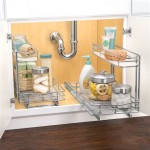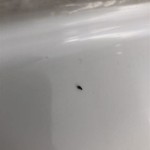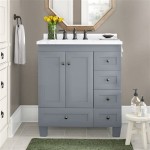How to Remove Stains on Bathroom Wall Tiles
Bathroom wall tiles, while durable and easy to clean, are susceptible to stains from various sources. Watermarks, soap scum, mildew, hard water deposits, and even rust stains can mar the appearance of your bathroom. Fortunately, many of these stains can be effectively removed with readily available cleaning supplies and a little elbow grease.
This guide will provide a comprehensive approach to removing common stains from bathroom wall tiles, outlining safe and effective methods for tackling each specific stain. Understanding the cause of the stain is crucial in selecting the appropriate cleaning solution and technique. With the right tools and knowledge, you can restore your bathroom tiles to their original shine and maintain their cleanliness for years to come.
Removing Soap Scum and Watermarks
Soap scum and watermarks are common culprits for dulling the appearance of bathroom wall tiles. These stains are typically caused by the buildup of soap residue, minerals, and dirt. To effectively remove these blemishes, follow these steps:
- Prepare the area: Wet the affected tiles with warm water and allow them to soak for a few minutes. This will help loosen the soap scum and make it easier to remove.
- Apply a cleaning solution: For stubborn stains, a commercial tile cleaner specifically designed for removing soap scum is recommended. Alternatively, a mixture of baking soda and water or vinegar can be used. Apply the chosen solution to the stained areas and let it sit for several minutes.
- Scrub gently: Use a soft-bristled brush or a non-abrasive sponge to gently scrub the tiles. Avoid scrubbing too hard, as this can damage the tile surface.
- Rinse thoroughly: Once the stains are removed, rinse the tiles with clean water to remove any residue. Dry the tiles with a clean cloth.
For persistent watermarks, consider using a pumice stone. Gently rub the stone over the stain in a circular motion, applying slight pressure. Rinse the tiles thoroughly afterward.
Eliminating Mildew and Mold
Mildew and mold thrive in damp environments, often appearing as black, green, or gray spots on bathroom walls. These fungi can be harmful to health and should be eradicated promptly. To remove mildew and mold from bathroom tiles, follow these steps:
- Ventilate the area: Open windows and doors to improve air circulation and reduce humidity. This will help prevent the growth of mildew and mold.
- Apply a mildew and mold remover: Choose a commercial product specifically designed for killing mildew and mold. Apply the solution to the affected areas, following the manufacturer's instructions. Let it sit for the recommended time to effectively penetrate and kill the fungi.
- Scrub with a brush: Use a stiff-bristled brush to scrub the affected areas, ensuring you reach all crevices and corners. Rinse the areas thoroughly with water.
- Dry the surfaces: Use a dry cloth or towel to wipe down the tiles, ensuring they are completely dry. This will prevent the mildew and mold from returning.
For preventative measures, consider using a mildew-resistant sealant on your bathroom tiles. This creates a protective barrier that inhibits the growth of mildew and mold.
Removing Hard Water Deposits and Rust Stains
Hard water deposits, often characterized by white or yellowish mineral buildup, can appear on bathroom wall tiles. Similarly, rust stains can occur from metal fixtures or appliances, leaving unsightly reddish-brown marks. Here's how to address these stubborn stains:
- Apply a commercial hard water remover: For hard water stains, utilize a product specifically designed for removing mineral deposits. Follow the instructions provided on the product label.
- Apply a rust remover: For rust stains, choose a rust remover designed for cleaning bathroom surfaces. Apply the solution to the affected areas and let it sit for the recommended time.
- Scrub with a brush: Once the cleaning solutions have had time to work, use a soft-bristled brush or a non-abrasive sponge to scrub the stained areas. Rinse the tiles thoroughly with water.
If dealing with very persistent hard water deposits, consider using a vinegar solution. Soak a clean cloth in undiluted vinegar and place it over the stain. Secure the cloth with plastic wrap and let it sit overnight. The acidity of the vinegar will help dissolve the mineral deposits. Rinse the tiles thoroughly with water the following morning.

3 Best Ways To Get Rid Of Hard Water Stains From Bathroom Tiles Kent

How To Remove Stains From Bathroom Tiles

How To Remove Stains From Bathroom Tiles

How To Remove Hard Water Stains From Tile And Grout Woodard

3 Ways To Remove Stains From Tiles Wikihow

How To Clean Mold In Shower Grout Tips And Tricks Certified Care

How To Clean Bathroom Tiles Problems With Their Solutions 2024

Home Remedies To Remove Bathroom Tiles Stubborn Stains

3 Best Ways To Get Rid Of Hard Water Stains From Bathroom Tiles Kent

How To Keep Your Fridge Stain Free Check Out These Easy Tips Vooki In
Related Posts







